“When Can I Lay On My Tattoo?” is a common question asked by anyone who has recently gotten a tattoo. If you’re wondering when it’s safe to lay on your ink, this article provides essential answers to help you understand the healing and aftercare process for a new tattoo. We’ll go over the timeline for when you can lay on your tattoo, as well as the best practices for proper aftercare. With this knowledge, you can ensure your new tattoo looks great for years to come.
Contents
What to Avoid During the Healing Process
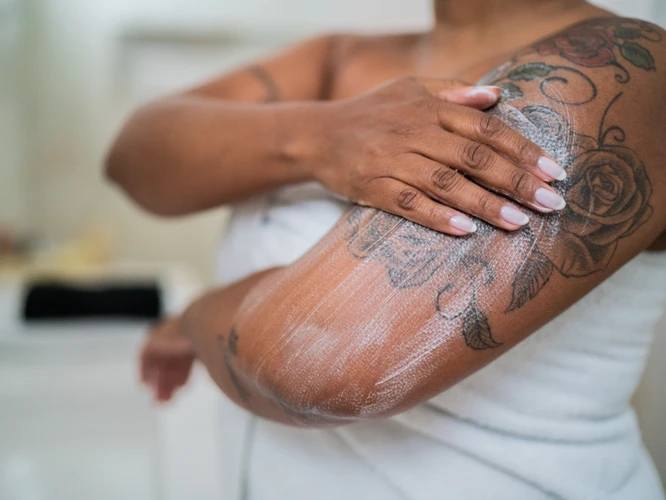
- Direct Sunlight: Direct sunlight can cause significant fading and discoloration of the tattoo, so it is important to keep the tattoo away from the sun while it is healing.
- Abrasive Clothing: Clothing that is too tight or abrasive can cause irritation and slow the healing process. Choose loose-fitting clothing that is made of a soft material such as cotton.
- Excessive Moisture: Too much moisture can interfere with the healing process and cause infection. Avoid swimming or taking hot baths while your tattoo is healing.
- Scratching and Picking: It’s important not to pick at the healing tattoo, as this can lead to irritation, infection, and scarring. If your arm tattoo itches, try applying a small amount of lotion.
- Heavy Exercise: Heavy exercise and strenuous activity can cause irritation and may slow the healing process. It is best to wait until your tattoo is completely healed before engaging in strenuous activity, such as running or weight lifting.
When it comes to sleeping with an arm tattoo, it is best to avoid sleeping on the tattoo. Instead, try to sleep on your back or side to avoid putting pressure on the tattoo.
How to Sleep with an Arm Tattoo

When it comes to sleeping with a new arm tattoo, it is important to keep it elevated above your heart to minimize swelling and reduce the risk of infection. It’s best to sleep with your arm propped up on a few pillows, so that the tattoo is higher than your heart. This can be difficult to do with a large arm tattoo, so you may want to consider sleeping in a recliner or an adjustable bed. Additionally, be sure to wear soft, breathable clothing to avoid rubbing or friction.
The best way to protect your tattoo while sleeping is to cover it with a thin layer of petroleum jelly and a breathable bandage. This helps keep the area clean and moist and prevents any bacteria from entering the wound. Be sure to change the bandage every morning and apply a fresh layer of petroleum jelly before bed.
Finally, it is important to keep the tattoo dry while sleeping. Sweating during the night can cause infection and irritation, so it’s best to avoid any activities that could cause excessive perspiration. Additionally, try to avoid sleeping on your back tattoo as much as possible, as this can cause it to rub and become irritated.
How to Sleep with a Back Tattoo

| Steps | Instructions |
|---|---|
| 1 | Wait at least 2 weeks before sleeping with a new back tattoo. |
| 2 | Clean the tattooed area with a mild soap and lukewarm water. |
| 3 | Gently pat your skin dry with a clean, soft towel. |
| 4 | Carefully apply a thin layer of a recommended ointment. |
| 5 | Wear a soft, clean shirt or wrap a bandage around the area. |
| 6 | Sleep on your back or side to avoid any rubbing or friction. |
| 7 | Wash and reapply the ointment in the morning. |
Follow these steps to ensure your new back tattoo heals properly before sleeping on it. It is important to wait at least two weeks before sleeping with a new back tattoo to allow for proper healing. Clean the tattooed area with a mild soap and lukewarm water, gently pat your skin dry with a clean, soft towel, and carefully apply a thin layer of a recommended ointment. Wear a soft, clean shirt or wrap a bandage around the area and sleep on your back or side to avoid any rubbing or friction. Wash and reapply the ointment in the morning.
How to Sleep with a New Back Tattoo
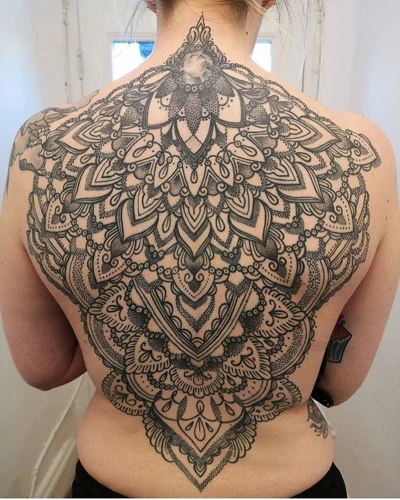
To ensure your new back tattoo heals properly and does not become irritated, it is crucial to sleep in the correct positions. When sleeping, try to position yourself so that your tattoo is not being bent, stretched, or compressed, as this can cause discomfort. Depending on the placement of your tattoo, you may need to adjust your sleeping position.
If Your Tattoo is on Your Upper Back:
It is best to sleep on your back or your side, with a pillow under your shoulder and one under your head to keep your tattoo elevated. This will help keep your back from sinking into the bed and pressing against your tattoo.
If Your Tattoo is on Your Lower Back:
Sleeping on your stomach is the best way to ensure your lower back tattoo does not become irritated. Place a soft pillow or towel underneath your hips for extra support and comfort.
If Your Tattoo is on Your Calf:
When sleeping with a calf tattoo, it is best to sleep on your back with your legs slightly elevated. Position two pillows under your knees to keep them propped up and your tattoo from becoming compressed.
It is important to sleep in a comfortable position that allows your tattoo to breathe and heal properly. Avoid sleeping on your tattoo and try to keep it covered with a clean cloth or loose-fitting clothing while you sleep to prevent it from becoming damaged or irritated.
How to Sleep with a Calf Tattoo
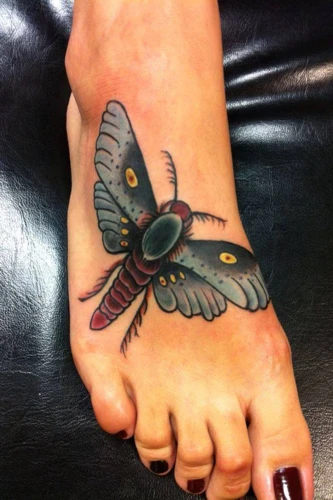
- Keep the Tattoo Clean: Wash your tattoo with a mild, unscented soap and warm water. Pat dry with a clean towel and allow the area to air dry before going to bed.
- Keep the Tattoo Covered: Use a loose-fitting bandage or a piece of non-stick gauze to cover the tattoo while you sleep. Make sure to replace the bandage each morning and to not re-use it.
- Maintain a Healthy Sleeping Position: Choose a position that puts the least amount of pressure on the tattoo. For example, if you have a calf tattoo, sleeping on your stomach may put too much pressure on the tattoo and cause it to crack or scab. Instead, try sleeping on your side or back to reduce the pressure.
- Use a Pillow: Place a pillow between your legs to reduce the amount of friction between your legs and the tattoo while sleeping.
- Do Not Apply Any Ointments: Tattoo ointments can cause irritation and can make the tattoo slip or slide while you are sleeping. Avoid using any type of ointment or lotion before bed.
How to Clean and Moisturize the Tattoo
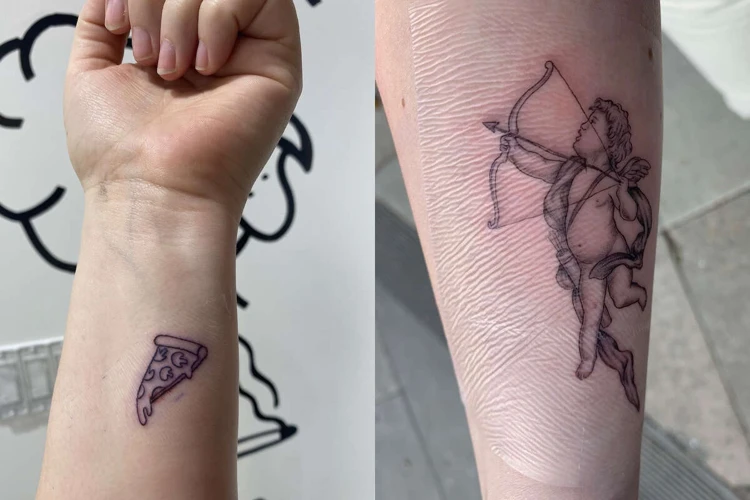
| Step | Description |
|---|---|
| 1 | Regularly clean the tattoo area with a mild soap and lukewarm water. |
| 2 | Gently dab the area with a clean, soft towel to dry it. |
| 3 | Apply a thin layer of moisturizer or ointment, such as A&D Ointment or Aquaphor, to the tattoo. |
| 4 | Reapply the moisturizer or ointment two to three times a day. |
It is important to keep the tattoo area clean and moisturized to promote healing and prevent infection. Follow these steps to properly clean and moisturize the tattoo:
Pain Management
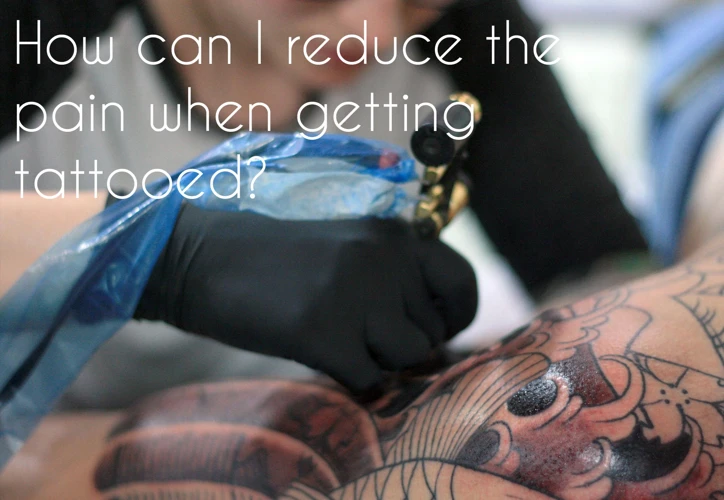
Managing Pain
- Take pain relievers such as ibuprofen, acetaminophen, or naproxen
- Apply topical numbing cream before the tattooing session
- Apply a cold compress after the session
- Avoid extended periods of direct sunlight
- Avoid immersing the tattoo in water for a few days after the session
Reducing Swelling and Itching
- Keep the tattoo clean and dry
- Gently pat the area with a soft cloth
- Apply a thin layer of an anti-inflammatory cream or ointment
- Avoid scratching the area
What to Expect During the Healing Process
The healing process for a new tattoo can take up to four weeks. During that time, it’s important to be aware of proper aftercare and healing techniques. It’s also important to understand what to expect during the healing process.
Day 1-3: Immediately after getting a tattoo, a thin layer of vaseline or an antibacterial ointment should be applied to the area. This helps to keep the area hydrated, reduce infection, and promote healing. During the first few days, the tattooed area may be very tender and swollen.
Day 4-7: The tattoo will begin to scab as the outer layer of skin sheds and heals. You will want to avoid touching the area and any activities which could cause further irritation. In addition, you may want to switch from using the ointment to a mild lotion to help keep the skin hydrated.
Day 8-14: During this time, the scab will continue to heal and the tattoo will start to look brighter. You should still avoid activities that can cause further irritation and keep the area moisturized.
Day 15-21: The scab will begin to flake off, but you should still avoid activities which may cause further irritation. You may also be able to resume normal activities.
Day 22-28: By this time, the tattoo should be almost healed. You may still have some minor scabbing or redness in the area, but this should go away as the skin continues to heal.
Day 29-35: The tattoo should be healed by this time. You may still have some minor redness in the area, but this should go away as the skin continues to heal.
It’s important to remember that everyone heals differently and the healing process may take longer or shorter for each person. Additionally, the healing process may vary depending on the size, location, and complexity of the tattoo. To ensure proper healing, it’s best to follow the aftercare instructions provided by your artist.
Frequently Asked Questions
How Long Should I Wait Before Showering After Getting a Tattoo?
Wait at least 6-8 hours. After getting a tattoo, you should wait 6-8 hours before showering. Showering too soon after getting a tattoo can cause infection and remove the ink from the skin. It’s important to keep your new tattoo clean, so wait until the initial healing period is over before showering.
What should I do if my tattoo starts to itch during the healing process?
Itching is a normal part of the healing process. To relieve the itching, try the following:
- Gently pat the area with a cool, damp cloth.
- Apply a thin layer of a mild, unscented lotion or moisturizer.
- Avoid scratching the area, which could cause further irritation or infection.
- Avoid hot showers or baths, as this can dry out your skin.
- Try taking an antihistamine for relief.
If the itching persists or gets worse, contact your tattoo artist or doctor for advice.
Are there any activities I should avoid when healing my tattoo?
Swimming, soaking in a hot tub, and exercising should be avoided for at least two weeks. Also, direct sunlight and tanning beds should be avoided, as these can damage the tattoo. Lastly, contact with harsh chemicals and abrasive materials should be avoided.
Are There Any Products I Should Not Use on My Tattoo?
It is important to avoid using certain products on your tattoo, such as petroleum jelly, alcohol, peroxide, and neosporin. These products can dry out and irritate the skin, and can cause damage to the tattoo’s design. Additionally, products that contain fragrance, dyes, and preservatives should be avoided.
How often should I use moisturizer on my tattoo?
-
• Immediately After Healing: Apply moisturizer every 3-4 hours for the first few days after the tattoo has healed.
• For Regular Maintenance: After the initial healing period, apply moisturizer once a day, or as needed.
• During Sun Exposure: Apply moisturizer before, during, and after sun exposure, and make sure to use a moisturizer that contains SPF.
• For Dry Skin: If your skin is dry and flaky, apply moisturizer more frequently.
Conclusion
It is important to follow your artist’s instructions and wait for the recommended amount of time before you lay on your tattoo. Proper aftercare and healing are essential for a successful tattoo experience. If you have any questions about the healing process, contact your artist for advice.